Powerful Chola Rulers Of Southern India: Patrons Of Architecture, Art And Literature
A. Sutherland - AncientPages.com - Among three prominent Tamil dynasties that ruled in Southern India, the Chola Dynasty, which ruled for four hundred years, is considered to be the most powerful and one of the longest-ruling dynasties; two others were the Cheras and the Pandyas.
It is believed that the center of the Chola Empire was located in the valley of the sacred Kaveri River of southern India, but not much is known about the early Cholas until the rise of Vijayalaya Chola, a king of South India Thanjavur (r. 850 – 870 CE) who founded the imperial Chola Empire.
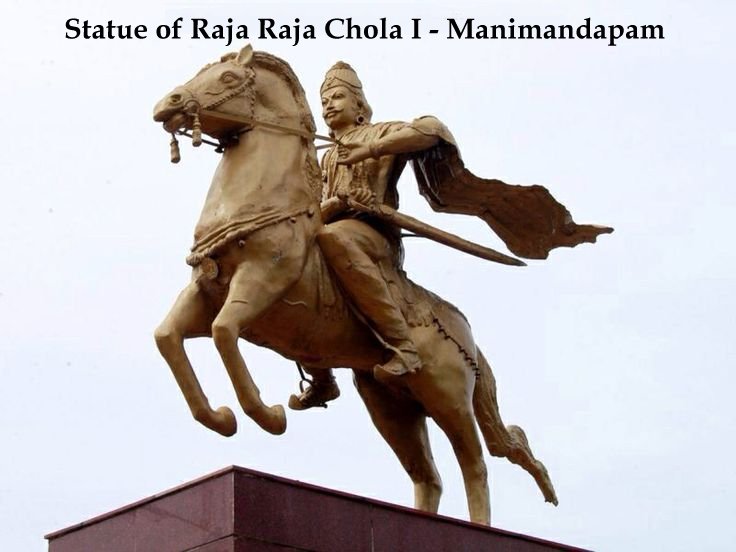
Statue of Raja Raja Chola I - Manimandapam. He was one of the greatest emperors of the Tamil Chola Empire of India
There is a vast number of inscriptions that help to reconstruct the dynasty's later history, which is mentioned in the earliest historical documents known as Ashoka’s Rock Edicts II and XII, a collection of 33 inscriptions on the Pillars of Ashoka as well as boulders and cave walls made by the Emperor Ashoka of the Mauryan Empire during his reign from 269 BC to 232 BC.
The achievements of Vijayalaya Chola were recorded in stone inscriptions and copper-plate foundation documents. He initiated a great period in the history of southern India, which was later continued by other rulers of this dynasty.
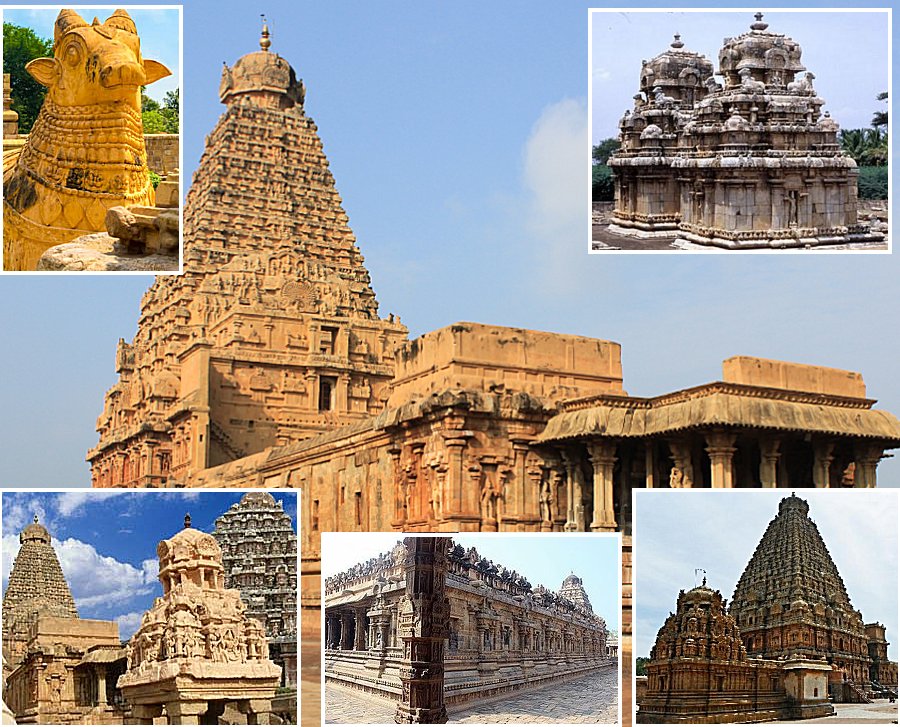
The temples were not only religious institutions but served as centers for economic and educational activities.
Another renowned ruler of the Chola Empire was Raja Raja Chola I (or Rajaraja Chola I, who ascended the throne in 985 and ruled until 1014. He was an efficient ruler, a great warrior, and a great enthusiast of architecture.
He commissioned the building of Brihadeshwara Hindu Temple dedicated to Shiva and located in Thanjavur in Tamil Nadu, southern India. Completed in 1010 AD, this magnificent temple in Dravidian style was the tallest (216 feet) building in India at the time. Its rich endowment included a huge gift of 60 bronzes of which 22 were given by the great King Rajaraja I.
The temple is now part of the UNESCO World Heritage Site known as the "Great Living Chola Temples".
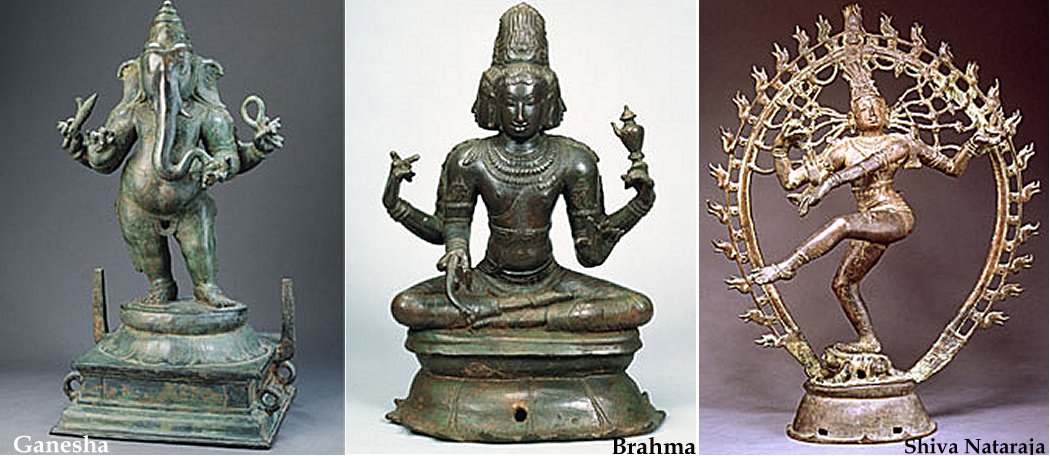
The bronze sculpture was raised to its recognition between the ninth-thirteenth centuries by the imperial Chola dynasty, the patrons of art, literature, and architecture. Source
At their height (about the 9th century till the beginning of the 13th century), the Cholas ruled over much of southern India, extending their control to include Sri Lanka, the Maldives, parts of Indonesia, and north up the coast of the Bay of Bengal to the Godavari basin (in the modern state of Andhra Pradesh.
The empire became very powerful politically, economically, and culturally. Their kings developed agriculture and created wide access to the thriving maritime trade routes, which included those of the Tang dynasty in China, Jewish traders in Aden, Yemen, and the Srivijaya Empire in the Malaysian archipelago. They developed strong trade links with China by sending their embassies. Ships of the Chola Empire carried goods from Africa and West Asia to China.
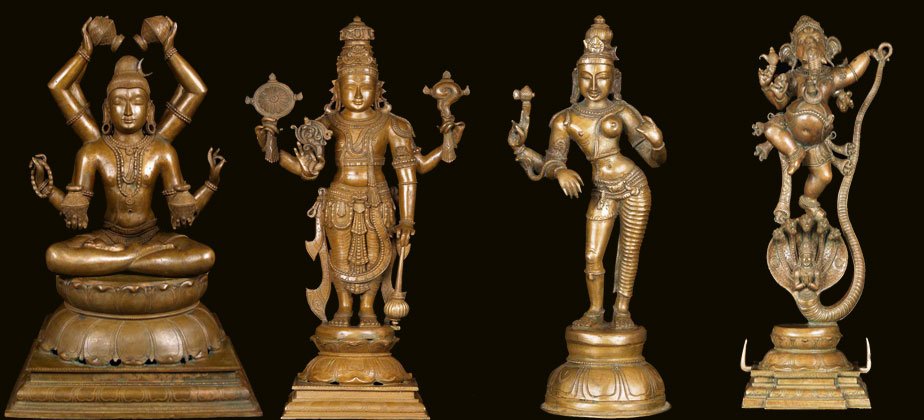
Chola Bronze sculptures. Source
The Cholas also started a large construction project and focused their work on the Tamil arts and literature, and built numerous stone temple complexes richly decorated with depictions of Hindu gods. The Chola skilled master builders used very hard building material, charnockite, and accomplished masterwork in a short time. The temples were not only religious institutions but served as centers for economic and educational activities.
Many argue that the magnificent bronze sculpture related to the Cholas is a masterwork that has never been equaled. The kings of this significantly elevated the art of bronze sculpture. Famous bronze masterwork was based on using the lost wax process. This ancient process was already established at the time the Chola kings came to power, but they additionally contributed to further development of the process and encouraged artists and bronze-smiths to work.
At the beginning of the 13th century, the Chola dynasty began to gradually decline until it was finally absorbed by the powerful Pandya kings.
However, the contribution of the Chola rulers to Tamil literature, art, and architecture has left a lasting and highly noticeable legacy throughout the region.
Written by – A. Sutherland AncientPages.com Staff Writer
Copyright © AncientPages.com All rights reserved. This material may not be published, broadcast, rewritten or redistributed in whole or part without the express written permission of AncientPages.com
Expand for referencesReferences:
Malarvannan, A. The Life of Mahabalipuram
Thapar, Bindia. Introduction to Indian Architecture
More From Ancient Pages
-
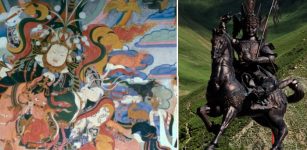 Legendary Epic Of King Gesar Who Descended From Heaven And The Ancient Tarna Monastery
Featured Stories | Nov 20, 2021
Legendary Epic Of King Gesar Who Descended From Heaven And The Ancient Tarna Monastery
Featured Stories | Nov 20, 2021 -
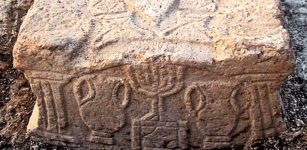 Rare 2nd Temple-Era Etchings Of Menorah And Cross Discovered In The Judean Hills
Archaeology | Jan 8, 2017
Rare 2nd Temple-Era Etchings Of Menorah And Cross Discovered In The Judean Hills
Archaeology | Jan 8, 2017 -
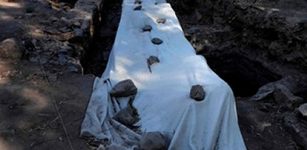 Archaeologists Unearthed Shrine To Apostle Peter In Israel’s Galilee
Archaeology | Aug 2, 2019
Archaeologists Unearthed Shrine To Apostle Peter In Israel’s Galilee
Archaeology | Aug 2, 2019 -
 Solar Eclipses And New Attempt To Date Homer’s Iliad And Odyssey
Myths & Legends | Jan 7, 2016
Solar Eclipses And New Attempt To Date Homer’s Iliad And Odyssey
Myths & Legends | Jan 7, 2016 -
 World’s Oldest Tattoo Tools Discovered In Tennessee, North America
Archaeology | May 2, 2018
World’s Oldest Tattoo Tools Discovered In Tennessee, North America
Archaeology | May 2, 2018 -
 Children Of Lir And Aoife’s Curse – Celtic Legend That Inspired The Swan Lake Ballet
Featured Stories | Feb 8, 2024
Children Of Lir And Aoife’s Curse – Celtic Legend That Inspired The Swan Lake Ballet
Featured Stories | Feb 8, 2024 -
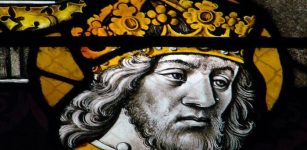 Charlemagne – Most Famous Emperor Of Education And Enemy Of Pagan Worshippers – What Did He Really Mean For Europe?
Featured Stories | Mar 22, 2023
Charlemagne – Most Famous Emperor Of Education And Enemy Of Pagan Worshippers – What Did He Really Mean For Europe?
Featured Stories | Mar 22, 2023 -
 How Did Mesopotamia Change The World?
Civilizations | Jan 18, 2020
How Did Mesopotamia Change The World?
Civilizations | Jan 18, 2020 -
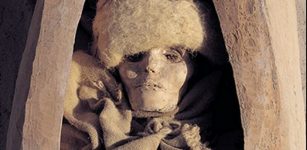 Mysterious Sleeping Beauty Of Loulan Mummy Is Still Perfectly Preserved After 3,800 Years!
Civilizations | Oct 30, 2014
Mysterious Sleeping Beauty Of Loulan Mummy Is Still Perfectly Preserved After 3,800 Years!
Civilizations | Oct 30, 2014 -
 DNA From 35,000-Year-Old Romanian Skull Reveals Flaws In The Theory Of Evolution
Archaeology | May 25, 2021
DNA From 35,000-Year-Old Romanian Skull Reveals Flaws In The Theory Of Evolution
Archaeology | May 25, 2021 -
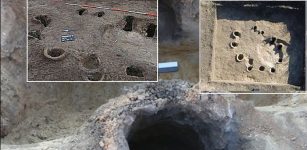 Celts In Poland: Iron Smelting Furnaces Used By Celts 2,400 Years Ago – Unearthed
Archaeology | Nov 30, 2019
Celts In Poland: Iron Smelting Furnaces Used By Celts 2,400 Years Ago – Unearthed
Archaeology | Nov 30, 2019 -
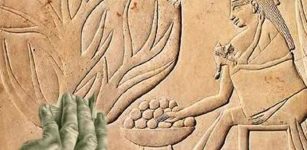 Being Left-Handed Was A Sign Of Evil Until Only Recently
Ancient History Facts | Jun 29, 2018
Being Left-Handed Was A Sign Of Evil Until Only Recently
Ancient History Facts | Jun 29, 2018 -
 Unusual 2,500-Year-Old Face Urns Reveal Garments, Appearance And Jewelry Of Prehistoric People
Archaeology | Nov 11, 2017
Unusual 2,500-Year-Old Face Urns Reveal Garments, Appearance And Jewelry Of Prehistoric People
Archaeology | Nov 11, 2017 -
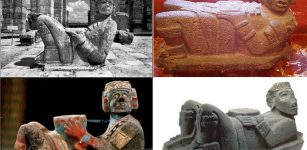 Image Of The Day: Chacmool – Famous Ancient Statue Of Pre-Columbian Mesoamerica
Image Of The Day | Sep 10, 2015
Image Of The Day: Chacmool – Famous Ancient Statue Of Pre-Columbian Mesoamerica
Image Of The Day | Sep 10, 2015 -
 Glima – Ancient Martial Art Practiced By The Vikings Is Still Popular Today
Ancient Traditions And Customs | Mar 7, 2017
Glima – Ancient Martial Art Practiced By The Vikings Is Still Popular Today
Ancient Traditions And Customs | Mar 7, 2017 -
 Sweden’s Blue Maiden ‘Blåkulla’ Island – Mythical Place With Dark Secrets Of Witches And Wizardry
Places | Sep 23, 2015
Sweden’s Blue Maiden ‘Blåkulla’ Island – Mythical Place With Dark Secrets Of Witches And Wizardry
Places | Sep 23, 2015 -
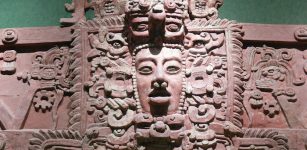 Fixing Archaeology’s Dating Problem – New Method Developed By Scientists
Archaeology | Sep 17, 2021
Fixing Archaeology’s Dating Problem – New Method Developed By Scientists
Archaeology | Sep 17, 2021 -
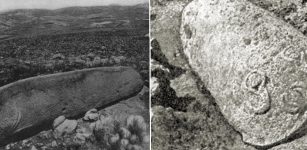 Mysterious 2000-Year-Old Carved Vishap Stone Monuments Of Armenia
Featured Stories | Dec 13, 2016
Mysterious 2000-Year-Old Carved Vishap Stone Monuments Of Armenia
Featured Stories | Dec 13, 2016 -
 On This Day In History: Battle Of Vincennes, Indiana – On Feb 24-25, 1779
News | Feb 24, 2017
On This Day In History: Battle Of Vincennes, Indiana – On Feb 24-25, 1779
News | Feb 24, 2017 -
 Is There An Over-Looked Ancient Secret In Sahara?- Intriguing Theory Examined
Featured Stories | Jul 30, 2019
Is There An Over-Looked Ancient Secret In Sahara?- Intriguing Theory Examined
Featured Stories | Jul 30, 2019
